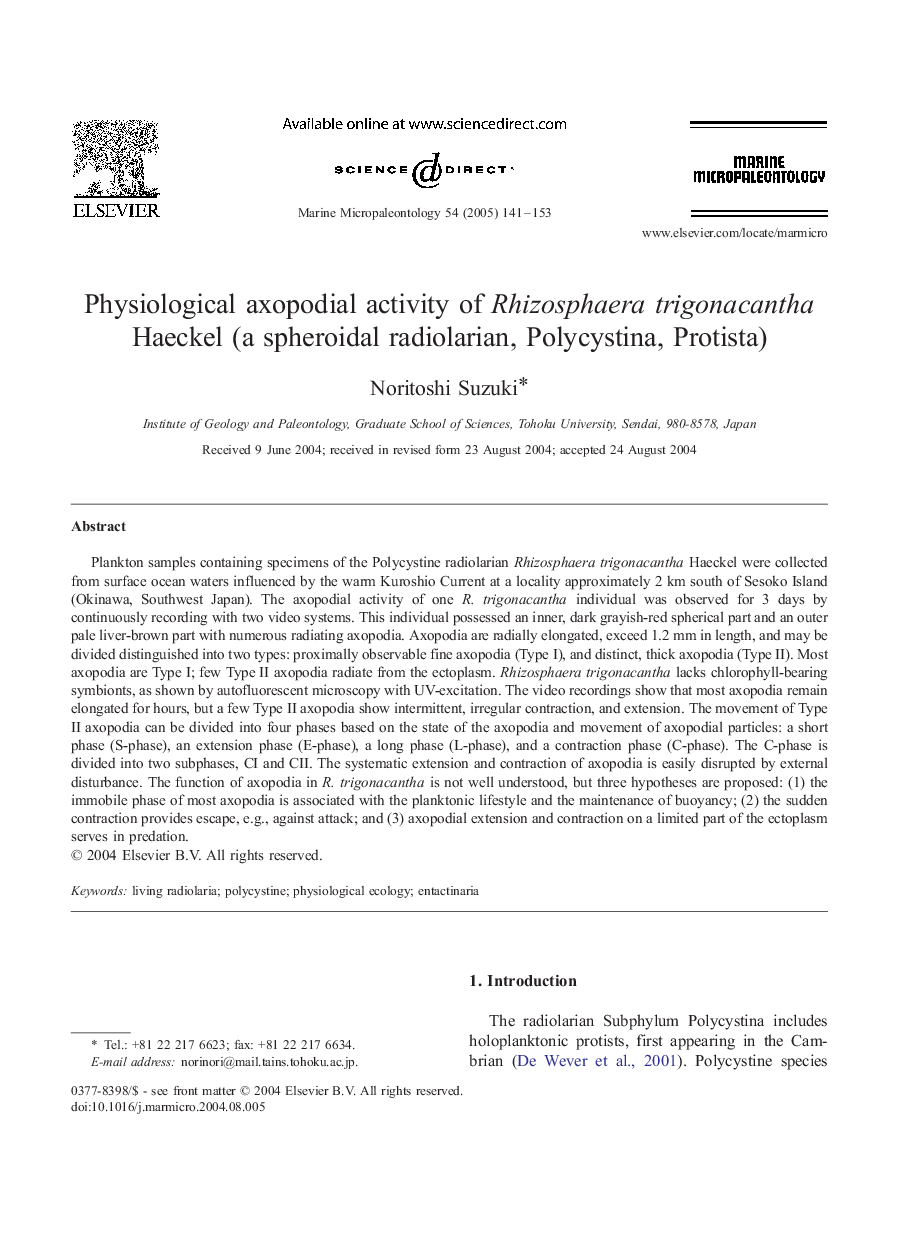| کد مقاله | کد نشریه | سال انتشار | مقاله انگلیسی | نسخه تمام متن |
|---|---|---|---|---|
| 9539563 | 1642240 | 2005 | 13 صفحه PDF | دانلود رایگان |
عنوان انگلیسی مقاله ISI
Physiological axopodial activity of Rhizosphaera trigonacantha Haeckel (a spheroidal radiolarian, Polycystina, Protista)
دانلود مقاله + سفارش ترجمه
دانلود مقاله ISI انگلیسی
رایگان برای ایرانیان
موضوعات مرتبط
مهندسی و علوم پایه
علوم زمین و سیارات
فسیل شناسی
پیش نمایش صفحه اول مقاله

چکیده انگلیسی
Plankton samples containing specimens of the Polycystine radiolarian Rhizosphaera trigonacantha Haeckel were collected from surface ocean waters influenced by the warm Kuroshio Current at a locality approximately 2 km south of Sesoko Island (Okinawa, Southwest Japan). The axopodial activity of one R. trigonacantha individual was observed for 3 days by continuously recording with two video systems. This individual possessed an inner, dark grayish-red spherical part and an outer pale liver-brown part with numerous radiating axopodia. Axopodia are radially elongated, exceed 1.2 mm in length, and may be divided distinguished into two types: proximally observable fine axopodia (Type I), and distinct, thick axopodia (Type II). Most axopodia are Type I; few Type II axopodia radiate from the ectoplasm. Rhizosphaera trigonacantha lacks chlorophyll-bearing symbionts, as shown by autofluorescent microscopy with UV-excitation. The video recordings show that most axopodia remain elongated for hours, but a few Type II axopodia show intermittent, irregular contraction, and extension. The movement of Type II axopodia can be divided into four phases based on the state of the axopodia and movement of axopodial particles: a short phase (S-phase), an extension phase (E-phase), a long phase (L-phase), and a contraction phase (C-phase). The C-phase is divided into two subphases, CI and CII. The systematic extension and contraction of axopodia is easily disrupted by external disturbance. The function of axopodia in R. trigonacantha is not well understood, but three hypotheses are proposed: (1) the immobile phase of most axopodia is associated with the planktonic lifestyle and the maintenance of buoyancy; (2) the sudden contraction provides escape, e.g., against attack; and (3) axopodial extension and contraction on a limited part of the ectoplasm serves in predation.
ناشر
Database: Elsevier - ScienceDirect (ساینس دایرکت)
Journal: Marine Micropaleontology - Volume 54, Issues 3â4, March 2005, Pages 141-153
Journal: Marine Micropaleontology - Volume 54, Issues 3â4, March 2005, Pages 141-153
نویسندگان
Noritoshi Suzuki,